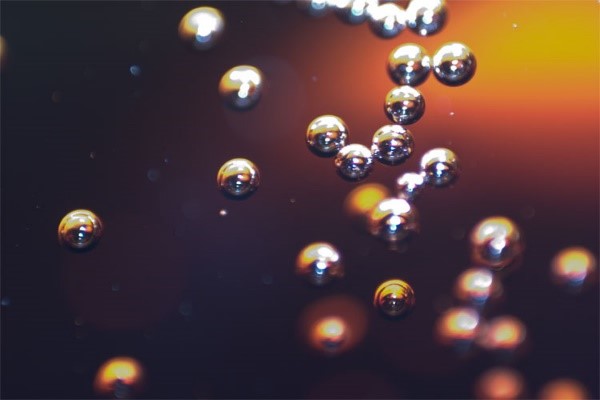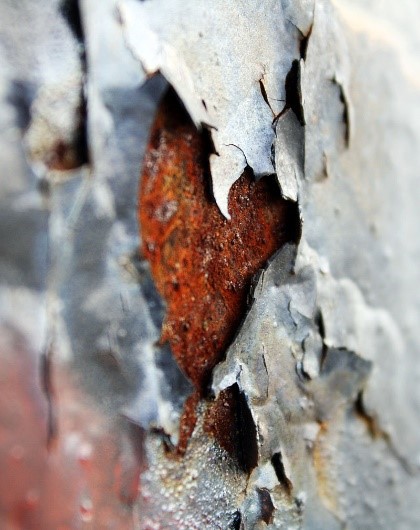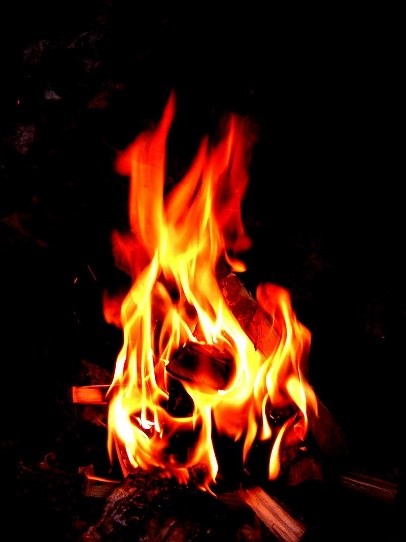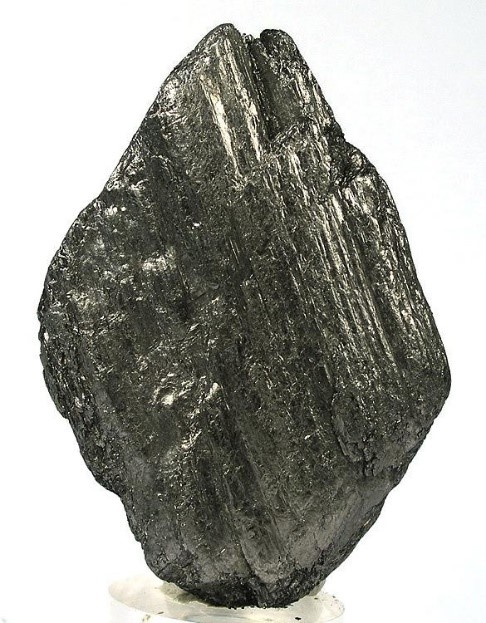In the case of reversible chemical reactions, the term Dynamic equilibrium is said to be achieved only when the rate of the backward reaction is equal to the rate of the forward reaction during the reaction process. The suffix ‘Dynamic’ is primarily used to describe that the chemical reaction is ongoing. Some example of dynamic equilibrium are given below.
Dynamic equilibrium can be achieved when the forward reaction and the reverse reaction are still occurring, however, the rate of occurrence of both the reactions are equal and unchanging i.e. they are in equilibrium. In other words, any chemical reaction is said to be in dynamic equilibrium when the rate of the forward reaction is equivalent to the rate of backward reaction simultaneously and the chemical reaction is reversible. Some example of dynamic equilibrium are:
NaCl reaction
For example, if we take a saturated solution having an aqueous solution of NaCl and then add some solid crystals of NaCl, it is seen that the Sodium Chloride is dissolving and recrystallizing at the same rate simultaneously in the solution. We can say that the reaction of the aqueous solution of Sodium Chloride dissolving into Sodium and Chloride ions given by the equation NaCl(s) ⇌ Na+(aq) + Cl-(aq) is in dynamic equilibrium when the rate of the dissolution of the Sodium Chloride solution is equal to the rate of recrystallization of Na+(aq) and be Cl-(aq) ions.
Nitrogen Dioxide-Carbon monoxide reaction
Let’s take another example of dynamic equilibrium: Nitrogen Dioxide gas reacts with Carbon monoxide to form nitrogen monoxide gas and carbon dioxide as shown in the equation NO2(g) + CO(g) ⇌ NO(g) + CO2(g). This is a reversible chemical reaction. This reaction is said to be in dynamic equilibrium when the rate of reaction of nitrogen dioxide with carbon monoxide is equal to the rate of reaction of carbon dioxide and nitrogen monoxide.
Acetic acid reaction
Dynamic equilibrium can be seen in a single-phase system such as an acidic-basic ion equilibrium in an H2O solution. For example, an aqueous solution of acetic acid dissociates into its H+(acidic) and basic ions while simultaneously being produced by the same ions. This reaction is given by the equation: CH3COOH ⇌ CH3COO + H+
Carbon dioxide reaction
We have observed examples of dynamic equilibrium in our daily life too. One such example is a sealed soda can or bottle. A sealed soda bottle contains carbon dioxide in both liquid form and the gaseous form (in the form of bubbles) along with the soda. The gaseous phase of carbon dioxide is in dynamic equilibrium with the liquid/aqueous phase of carbon dioxide. The liquid phase of carbon dioxide gets converted into its gaseous phase at the same rate as the gaseous phase of carbon dioxide dissolves into the liquid form of carbon dioxide. The equation of the mentioned reaction is given as CO2(g) ⇌ CO2(aq).

Nitrogen and hydrogen reaction
Industrial ammonia synthesis by using Haber’s process is also an example of a reaction that can be in a dynamic equilibrium. The reaction is given by the equationN2 (g) + 3H2 (g) ⇌ 2NH3 (g). In this nitrogen and hydrogen molecules combine to form ammonia and ammonia simultaneously disintegrates to form the nitrogen and hydrogen molecules.
Nitrogen dioxide reaction
Another example of dynamic equilibrium is the dimerization of nitrogen dioxide in the gaseous phase. The reaction is given by the equation 2NO ⇌ N2O4
Let us dig a bit deeper to understand the concept of dynamic equilibrium better.
What are the examples of reactions that can never be in dynamic equilibrium?
Irreversible reactions can never be in dynamic equilibrium. In these kinds of reactions, the reactants get converted into products but the vice-versa does not take place. Thus, any possibility of establishing dynamic equilibrium is eliminated.
One such example is the reaction of iron with water vapor to form rust. This is given by the equation:
4 Fe(s) + 6 H2O(l) + 3O2 (g) → 4 Fe(OH)3 (s)
Rust cannot disintegrate back into iron and water vapor. We can see that because this is an irreversible reaction, the arrow from the reactants to products is pointed in only a single direction.

Another example of an irreversible reaction is the reaction of a fuel with atmospheric oxygen to form carbon dioxide and water vapor. This reaction is given by the equation
Fuel + O2 → CO2 + H2O
This is called the combustion reaction. The products i.e. carbon dioxide and water vapor cannot react back to produce fuel and oxygen. Therefore, the reaction is one-sided.

There can be many examples of such irreversible reactions where the products cannot return back to the reactants. In all such reactions, establishing a dynamic equilibrium between the products and the reactants is not possible.
How to maintain dynamic equilibrium in a system?
It is difficult to maintain a dynamic equilibrium in a reaction. Every slight change in the temperature, pressure, or concentration of a reaction has the ability to shift or knock off the dynamic equilibrium.
For this reason, the soda bottle becomes flat or loses the bubbles after it is left open. Once the can is opened the carbon dioxide in the gaseous phase is able to react or interact with the atmospheric carbon dioxide and other gases. It is hence no longer a closed system. This releases the gaseous carbon dioxide that was present in the form of bubbles and knocks off the dynamic equilibrium that was previously established when the bottle was sealed.
What are the conditions for Dynamic equilibrium?
The conditions necessary for dynamic equilibrium in a reaction is given as follows:
- The amount of reactants and products needs to be unchanged as that in the start of the reaction. It is not allowed to add reactants during the reaction externally.
- The reaction should be in a closed system so that no other influence or substances can get added up the reaction.
- The reaction has to be reversible in nature.
- It is important to maintain the physical parameters such as temperature, pressure, etc. at equilibrium throughout the reaction.
How to detect that a system is in dynamic equilibrium?
We can say that in dynamic equilibrium a system is in a steady state i.e. the variables in a chemical reaction do not change with time since the rate of the reversible and forward reactions are equal.
- If we observe a reaction at dynamic equilibrium, then we will not be able to see any change and it would look like no reaction is taking place. However, the reaction taking place in the forwarding direction is compensated by the reaction taking place in the reverse direction simultaneously.
- If you are given a reaction you can make out if the reaction is in dynamic equilibrium or not by observing the amount or quantity of the reactants and products of the reaction. If you observe that the quantity of product exceeds the quantity of reactants or the quantity of reactants exceeds the quantity of products, then you can cancel out the possibility of dynamic equilibrium in the reaction.
- However, if you see that the amount of product and reactant remains the same as that at the starting of the reaction i.e. the amount of reactants and products remains unchanged throughout the reaction, then it may or may not be in dynamic equilibrium. Sometimes the changes in the amount of products and reactants are very minute that makes it difficult to be detected by naked eyes. At other times the reaction may be in static equilibrium.
What is Static equilibrium?
Static equilibrium in a reaction refers to the phase where the reaction is at a halt or there is no reaction taking place between the reactants or the products.
We can say that in the case of static equilibrium, the rate of forwarding reaction and the rate of backward reaction is both zero. The quantity of the products and the reactants stay unchanged. An example of static equilibrium is the process involving the formation of graphite from diamond and vice-versa. The reaction is given by the equation C(diamond) ⇌ C(graphite)

The stability of graphite is more than that of a diamond. One needs to heat graphite as high as 2000°C or more to trigger its activation energy and convert it into a diamond. In-room temperature, this conversion would require millions of years to complete. There would be an infinitesimal amount of conversion between the two substances in general conditions. Hence, it can be said that at room temperature this reaction is at static equilibrium.
What are the differences between a dynamic and a static equilibrium?
| Static Equilibrium | Dynamic equilibrium |
| This type of equilibrium can be attained in irreversible reactions in general. | This type of equilibrium can be attained in reversible reactions in general. |
| The reactants and products are not participating in any kind of reaction after attaining equilibrium. | The reactants and products are simultaneously participating in the reaction even after attaining equilibrium. |
| The rate of forwarding chemical reaction (between the reactants) and the rate of reverse chemical reaction (between the products) is both equal to zero i.e. they do not react with each other. | The rate of forwarding chemical reaction (between the reactants) is said to be equivalent to the rate of reverse chemical reaction (between the products). |
| This type of equilibrium can be seen in both open and closed systems. | This type of equilibrium can be seen only in closed systems. |
| In a chemical reaction, static equilibrium is the phase where the reaction comes to a standstill i.e. is no further reaction takes place between the reactants or the products. | In a chemical reaction, Dynamic equilibrium is the phase that is achieved only when the rate of the reverse chemical reaction is equivalent to the rate of the forward chemical reaction concurrently during the reaction process. |
| This is used mainly in a mechanical context. | This is used mainly in a chemical context |
We hope this post provided all the necessary information regarding the example of dynamic equilibrium.
- Can Light Bend Around Corners? Important FAQs
- What is a Shadow: How is Shadow Formed | 3 parts of a Shadow
- Critical 20+ Resonance Examples in daily life with Explanations, FAQs
- Specular and Diffuse Reflection : Important FAQs, Concepts, Examples
- Thin Film Interference Notes: Equation, Working, Dependence, Applications, Problems, and FAQs
- Spherical Mirror | All Important concepts and 10+ FAQs

Hi, I am Sanchari Chakraborty. I have done Master’s in Electronics.
I always like to explore new inventions in the field of Electronics.
I am an eager learner, currently invested in the field of Applied Optics and Photonics. I am also an active member of SPIE (International society for optics and photonics) and OSI(Optical Society of India). My articles are aimed at bringing quality science research topics to light in a simple yet informative way. Science has been evolving since time immemorial. So, I try my bit to tap into the evolution and present it to the readers.
Let’s connect through